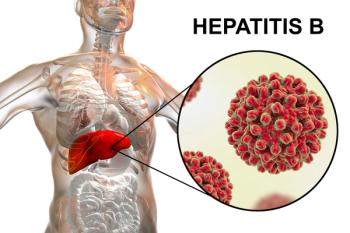
Future of hypertension control: Will there be a JNC-8?
Although 65 million Americans have hypertension, nearly 70% of U.S. patients do not have their blood pressure (BP) controlled to goal. "We need to do a better job getting patients to understand that uncontrolled BP is associated with an increased risk of cardiovascular events, vascular disorders and endothelial dysfunction, metabolic syndrome and Type 2 diabetes, target organ damage, and dementia," said Thomas Giles, M.D., a professor of medicine at Louisiana State University School of Medicine in New Orleans. Giles addressed a media briefing on hypertension guidelines that was held recently in New York City. The event was sponsored by Novartis.
Although 65 million Americans have hypertension, nearly 70% of U.S. patients do not have their blood pressure (BP) controlled to goal. "We need to do a better job getting patients to understand that uncontrolled BP is associated with an increased risk of cardiovascular events, vascular disorders and endothelial dysfunction, metabolic syndrome and Type 2 diabetes, target organ damage, and dementia," said Thomas Giles, M.D., a professor of medicine at Louisiana State University School of Medicine in New Orleans. Giles addressed a media briefing on hypertension guidelines that was held recently in New York City. The event was sponsored by Novartis.
Certain issues contribute to poor compliance among those with hypertension, Giles explained. For example, published treatment guidelines are helpful, but they are often disregarded in clinical practice.
Giles maintained that the development of JNC-8 is somewhat in doubt. He said the guidelines have already received seven revisions and funding is limited. In addition, other disease states more urgently require government-endorsed treatment guidelines. Giles also said that organizations, such as the American College of Cardiology and the American Heart Association, or the American Society of Hypertension, are capable of funding and publishing such guidelines.
Giles believes that patients are rarely motivated to lower their BP and keep it at goal, and physicians often lack the enthusiasm and persistence required to help patients reach their target BP.
Several barriers must be overcome if clinicians are to motivate patients to control their blood pressure, Giles said. He explained that the responsibility to control hypertension falls on both the patient and the physician. Patients must be given a goal to work toward, and that goal must be individualized for each patient.
Giles also mentioned that physicians must find ways to make hypertension something tangible for their patients, even in the absence of symptoms. He said that patients could easily be taught to monitor their blood pressure at home.
One of the biggest barriers to patient motivation is time, Giles said. High-risk patients need clinicians who are willing to help them understand the benefits of controlling their blood pressure.
Once patients commit to lowering their BP, what treatment strategy is best? Optimal vascular protection involves earlier and more aggressive control and pharmacologic blockade of the renin-angiotensin-aldosterone system (RAAS), said Matthew Weir, M.D., professor and director of the division of nephrology at the University of Maryland School of Medicine in Baltimore. The RAAS is important in maintaining normal arterial BP and plays a significant role in the progression of congestive heart failure.
Weir pointed out that multiple agents are often needed to achieve target BP. He said that certain clinical endpoints, including the incidence of cardiovascular mortality, are important tools to evaluate the efficacy of a therapeutic regimen and tailor treatment to the needs of individual patients.
Weir told the audience that surrogate measures of therapeutic efficacy, including fewer new diagnoses of diabetes mellitus among those with hypertension, might help identify an appropriate BP goal and therapeutic regimen. Weir called the evidence that RAAS system blockade improves these surrogate markers "encouraging."
The combination of an angiotensin-converting enzyme (ACE) inhibitor or an angiotensin receptor blocker with either a thiazide diuretic or a calcium-channel blocker appears to be the most effective treatment for lowering BP, regardless of ethnicity, said Weir. The ACCOMPLISH study will compare two regimens-an ACE inhibitor and a thiazide diuretic, and an ACE inhibitor and a calcium-channel blocker-to determine which regimen controls hypertension more effectively and compare the regimens' impact on target organ damage, he said.
In addition to RAAS blockers and other antihypertensive agents, Giles mentioned that the renin inhibitor Aliskiren (SPP100, Novartis) is currently in phase III trials, and advanced glycosylation end-product cross-link breakers are also being developed. Even the use of phosphodiesterase-5 inhibitors such as sildenafil (Viagra, Pfizer) as antihypertensives is being evaluated, Giles said. Clinicians need to forge meaningful partnerships with industry and work with pharmaceutical companies to improve the public's health, he concluded.
Newsletter
Pharmacy practice is always changing. Stay ahead of the curve with the Drug Topics newsletter and get the latest drug information, industry trends, and patient care tips.











































































































































































































